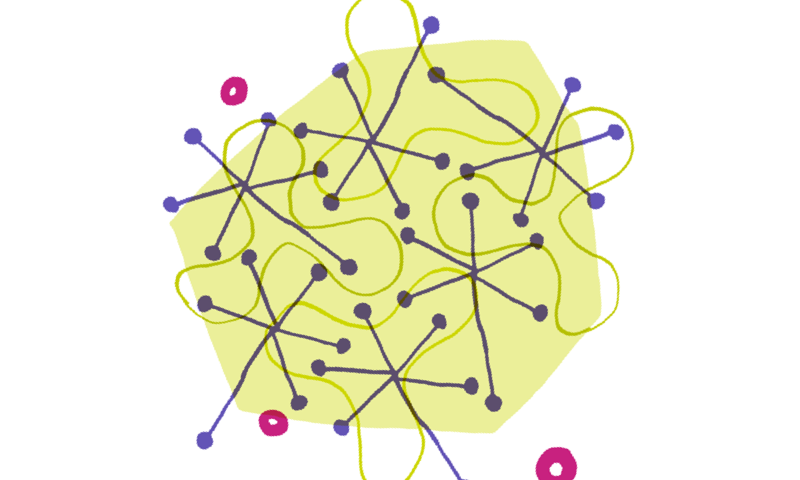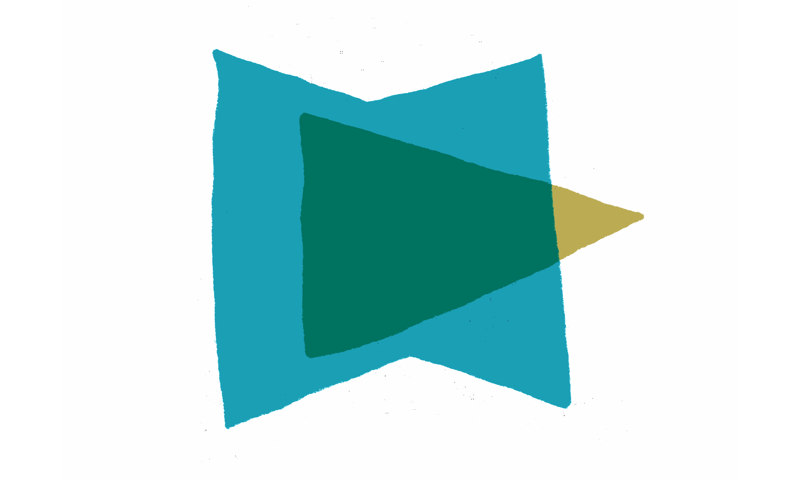Cirrus LegacyFigures show that the average person now has 26 internet accounts for managing a range of things from organising your social life to banking, paying bills and doing the weekly shop.
Night of the Digital Dead for Internet Week Europe
To celebrate Internet Week Europe this year Made by Many created an alternative kind of event; we invited guests to join us on a walking tour of East London whilst we contemplate the question, 'what will happen to our digital selves when we die?'.
"Pretty morbid", you might say, but fifty or so people signed up and proved to us there's an appetite for this gritty discussion.

Why did we do this?
This all started over a discussion between Ana Cecilia and Nelson Sachse about a Time magazine cover, on Google wanting to solve death. This got us thinking, if we're going to be immortal what would that mean for our data, would it be immortal too?
At Andy Whitlock's Metaphwoar event last year, some of the Made by Many staff were inspired by Nat Hunter's take on looking at death as a design challenge. How could we do it better? Not the dying bit perhaps, but the planning for it. The concept of getting your papers in order still exists, but now we have the additional challenge of making arrangements for our growing number of digital profiles.
For Internet Week we wanted to get people thinking of some opportunities to design products and services that could help us plan for our digital afterlife. We invited some speakers along, each of whom already works in this new space of planning for digital legacy.

But why did we do it out on the streets?
I'd like to say something really smart here about Aristotle and his peripatetic approach to lecturing (talking and walking), but the truth is that we just thought it would be more fun to get people up and active. We didn't just want to host another evening of slideshow presentations.
The streets not far from the Made by Many office leant themselves as a historically rich and slightly spooky backdrop for our gathering, for Whitechapel was once the stomping ground of serial killer, Jack the Ripper. We followed the route from the Ten Bells Pub which was frequented by the Rippers victims, to Wilson's Music Hall, just a short walk from Leman Street police station, the centre for the investigation into the killings 125 years ago.

What was said?
Stacey Pitsillides, a PhD Design student and tutor at Goldsmiths university whose research focuses on digital death and heritage, spoke about augmenting spaces with our digital footprints. She asked us to think about how we are able to leave stories wherever we go and suggested that our loved ones could be able to pick up alerts based on our archived geolocated tweets or Instagram photos in years to come.
Imagine if people could be permitted a little snap shot of the lives that have gone before ours in the physical space around us; like a digital memory, technologies could give us a nudge and reconnect us to the people we've lost.

Paul Golding, founder and director at Cirrus Legacy, got us thinking about the commonly vulnerable status of our online accounts.
Cirrus Legacy promise to secure your digital legacy, by providing a service to set up a digital guardian or executor who will follow your wishes in the event of your death.
We were surprised to learn that once you've died, if you haven't made other plans, Flickr will own your photographs and would be within their rights to sell them to a third party.

Andriana Cassimatis creator of The Black Ribbon blog shared her experiences of badly designed products and services which she had to contend with whilst dealing with her own personal grief. Badly-worded generic sympathy cards, and funeral homes with the ambience of a grandma’s living room, did not sooth her at this difficult time. With the blog she aims to push people's thinking forward by highlight architects, designers and services which are offering something new or different and more bespoke.
She started The Sympathy Project to encourage poets, artists, musicians, designers, cartoonists and wordsmiths to collaborate and create modernised, meaningful e-cards or digital products which deliver more relevant messages of sympathy to the recipient.

Our digital execution
Not content with simply talking about this topic some of Made by Many's developers decided to prototype a plugin to bring a digital death to life. The digital execution Callum and Nelson conducted wasn’t real of course but our volunteer from the audience, Samuel Crosland from YPlan, didn’t know for sure. He took it in good spirits when we got him to sign our a legal disclaimer in room full of witnesses. The end affect was rather beautiful; a gentle release as his tweets simply came loose and dropped from the page.

The Google Chrome extension used by our digital executioners is open source and available on GitHub and is downloadable from the Chrome Web Store for anyone who fancies playing around with it.

So what are the design opportunities?
These days it's easier to create than to delete; there's a panoply of new services and digital content that gets created by people without a thought to either their inevitable future death or who ultimately retains and owns this data in the long term.
So maybe the solution is a simple centralised service that enables you to divide up your digital assets; choosing which should be bequeathed to trusted others and those which should be archived or deleted after you've died.
Maybe we should think of it more like setting advanced preference settings; a check list against accounts with a tick box to delete or share on death, with a choice of who should get access from a drop-down list of names, along with a pre-written, personally worded email auto-response to inform people of your new status and unsubscribe you from any future mailing lists.
It turns out that letting go of your digital baggage could be quite a relief.
Continue reading
Part 3: Mystery Skype: from meme to platform in three weeks
This is the third part of our blog series about how we built a new teaching community around an existing user behaviour on Skype in the classroom. Read pa...
Part 2: Mystery Skype: from meme to platform in three weeks
The second part of our blog series about how we built a new teaching community around an existing user behaviour on Skype in the classroom. Read parts 1 a...
Part 1: Mystery Skype: from meme to platform in three weeks
This is the first part of a three part blog series about how we built a new teaching community around an existing user behaviour on Skype in the classroom...


